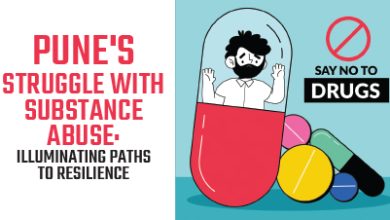What is fear and phobia and how can you overcome the issue? what all steps one should take to overcome the issue.

1. Introduction:
There are a number of different types of phobias, but some of the most common include agoraphobia (a fear of open spaces), claustrophobia (a fear of enclosed spaces), arachnophobia (a fear of spiders) and acrophobia (a fear of heights).
While it may seem like there’s no way out for people suffering from these crippling fears, there are treatments available that can help them overcome their anxieties and live normal lives.
Agoraphobia is the most common phobia, affecting around one in five people. People with this fear can experience intense anxiety when faced with open spaces such as public transport or busy streets. There are a number of different treatments available to help people overcome their agoraphobia, including Cognitive Behavioural Therapy (CBT), which helps change the way a person thinks about their fears.
Claustrophobia is another common phobia, and is characterized by a fear of confined spaces such as elevators or tunnels. CBT can be used to help individuals understand why they have this fear and then work on learning how to control it. Acrophobia is a specific type of claustrophobia that involves a fear of high places, such as buildings or mountains. Again, CBT can be used to help sufferers learn how to deal with their fears by teaching them specific techniques for dealing with high places.
2. What is fear?
When we feel unsafe, or when we think something bad is going to happen, our brain signals the release of a hormone called cortisol. This “stress hormone” causes many physical changes in the body that help us deal with perceived threats, including increasing heart rate and blood pressure. We may also breathe more quickly and sweat more. These bodily reactions are known collectively as the fight-or-flight response.
Cortisol can be a useful response in some situations, but it’s also natural and necessary to respond to danger gradually. When we experience too much cortisol, it can lead to health problems like weight gain, high blood pressure, and anxiety disorders. That’s why it’s important to understand how cortisol works and when it’s appropriate to release it.
For most people, fear is short-lived and goes away once the threat has passed. But for some people, fear can become so intense that it interferes with their daily lives. When this happens, we might say that they have a phobia. Phobias involve intense fears of specific objects or situations (such as spiders or flying), which generally cause an automatic flight-or-fight response even though there may be no real danger present.
There are many different types of phobias (including animal phobias like snakes or dogs; natural environment phobias like heights; situational phobias like driving; blood–injection–injury type phobia is related to needles); and there is not one specific phobia that applies to every person.
3. Different types of fear
Different people experience fear in different ways. Some people are naturally fearless, while others are very fearful. There are different types of fear: situational fear (fear of an event that is happening now), reflexive fear (a natural response to a sudden stimulus) and persistent/chronic fear (an acquired phobia)Each type of fear has a different impact on mental health and overall well-being.
Persistent/chronic fear is an intense and irrational fear of specific situations or objects. It can be extremely disabling and lead to significant distress for the individual. It may also impact their ability to work or socialize.
Chronic fear is a form of anxiety that lasts longer than 6 months. People with chronic fear are more likely to experience other forms of anxiety as well, including panic disorder and generalized anxiety disorder. As with any type of anxiety, effective treatment includes therapy and coaching.
Therapy can help individuals learn how to control their fear and distress in specific situations. Coaching focuses on helping individuals build skills they can use in daily life, such as self-awareness, problem solving, stress management, and communication skills. Together, therapy and coaching provide long-term relief from persistent/chronic fear.. Each type of fear has a different impact on mental health and overall well-being.
Reflexive fear is a natural response to a sudden stimulus. It helps us avoid danger and protect ourselves. Reflexive fear can be helpful or harmful, depending on the situation. In some cases, reflexive fear can help you escape danger. For example, when you see a lion in the wild, your reflexive fear may cause you to run away. Your reflexive fear will also help you avoid injury in sports. When you jump out of the way of a ball, your reflexive fear will cause you to dodge it. Reflexive fear can also be helpful when it alerts you to possible danger. When you hear sirens in the distance, your reflexive fear may cause you to hurry home from work. Reflexive fear can also be helpful when it keeps us safe from harm. For example, if there is someone standing behind me with a knife held at my back, my reflexive fear may cause me to scream and run away.”, and persistent/chronic fear (an acquired phobia). Each type of fear has a different impact on mental health and overall well-being.
Situational
Fear of events that are happening currently can be very scary, but it usually passes quickly. People who experience this type of Fear often feel panicky and have trouble concentrating. However, most situations don’t actually result in any harm or Losing something valuable. Reflexive
Reflexive fears happen automatically—without any reason. They’re usually triggered by suddenly seeing or hearing something unexpected and can cause intense anxiety. Reflexive fears can be especially challenging to deal with because they’re difficult to predict or control. Persistent /Chronic
People who have persistent / chronic fears often struggle day-to-day due to the fact that they’re always anxious about what could trigger their phobia. This makes everyday tasks such as going outside, traveling, or interacting with other people incredibly difficult! therapy and coaching can help individuals learn how to handle these types of fears in a healthy way so they can continue living a happy and productive life
There are different types of fear, but the three most common are social anxiety, specific phobias, and panic disorders. Social anxiety is a general feeling of nervousness or unease around other people. Specific phobias are intense fears of particular objects or situations, such as heights or flying. Panic disorders involve recurrent episodes of sudden and overwhelming fear that can come on without warning.
4. Fear and phobia:
What’s the difference?
Most of us tend to use the words “fear” and “phobia” interchangeably, but there is actually a big difference between the two. Fear is a normal, natural emotion that we all experience from time to time in response to something threatening or dangerous. A phobia, on the other hand, is an irrational fear that becomes so severe that it interferes with your ability to function normally in day-to-day life. People with phobias often go out of their way to avoid whatever it is they are afraid of and may even suffer from panic attacks when faced with their feared object or situation.
There are many different types of phobias (far too many to list here!). Some common examples include agoraphobia (a fear of open spaces), claustrophobia (a fear of enclosed spaces), social anxiety disorder (a fear of being around other people) and specific phobias such as arachnophobia (a fear of spiders) or acrophobia (a fear heights).
If you think you might have a phobic disorder, it’s important to seek professional help.Cognitive behavioral therapy is usually very effective in treating this condition.
There is no one-size-fits-all approach to managing fear and phobia, as the effects of these conditions can be extremely personal. However, if you think that you might have a phobic disorder, it’s important to seek professional help. Anaphobia is a mental health condition characterized by extreme fear or anxiety about experiencing certain types of situations or environments, which can significantly impact everyday life. If left untreated, ana phobic disorder can lead to significant social isolation and chronic stress, potentially damaging your physical and emotional health in the long run.
Given the serious consequences of untreated anaphobia, it’s important to seek professional support as soon as possible.Fortunately, there are many resources available to those suffering from this condition. In particular, therapy and coaching can be very helpful in reducing Fear intolerance and increasing coping ability techniques for building resilience against future challenges. These treatments often result in lasting improvements in both mental health and quality of life for those who receive them. So if you’re struggling with fear or anxiety, don’t hesitate to reach out for help – there is certainly hope available for those who take the necessary steps. Cognitive behavioral therapy is usually very effective in treating this condition.
5. How can we overcome our fears and phobias?
Fear and phobia are two different types of emotions that people can experience. Fear is a natural response to danger or potential harm, while phobia is an abnormal fear that causes significant distress or prevents people from functioning normally. Both fear and phobias can have a negative impact on mental health and overall well-being.
People who experience fear typically feel adrenaline in their bloodstreams when they are in danger, which prepares them to flee or fight. This reaction is helpful for survival, but it can sometimes create problems in our lives. For example, someone with anxiety might worry about everything from public speaking to being alone in the dark. This constant worrying can lead to stress and anxiety, which has a negative impact on mental health.
People with phobias tend to be hypersensitive to certain objects or situations. They may get nervous just thinking about something, smell something frightfully strong, or hear loud noises. Phobic symptoms can range from mild discomfort (as with butterflies) to severe panic attacks that make it difficult for people to breathe or function normally.
Both types of fear have negative impacts on mental health outcomes, but there are also specific consequences for having a phobia. People who have a phobia often avoid situations where they know the danger exists (like spiders), which has a major impact on their everyday life and quality of life . By avoiding these feared activities, people with phobias usually lose out on important social interactions and opportunities . Additionally, this type of avoidance often leads to depression , as the sufferer feels isolated and hopeless . Finally, research has shown that people with persistent fears tend to die earlier than those without them – possibly due not onlyto increased rates of cardiovascular disease , but also due to physical symptoms like difficulty breathing caused by Anxiety Attacks !!! In short- both fears have serious drawbacks; however- depending on the individual’s situation- one may be more debilitating than the other.”
If you’re struggling with fear or phobias, there are a number of things you can do to get help. Talk to your doctor or a mental health professional about the best way to address your specific fears. You may also want to consider exposure therapy, which gradually exposes you to the thing you’re afraid of in a safe and controlled environment. With time and practice, this can help reduce your overall anxiety and make dealing with your fears more manageable. There are also many self-help books and online resources available that can provide support and guidance for overcoming fear and phobias.
6. Conclusion
People with fear and phobia suffer from profound anxiety and physical sensations that make everyday activities incredibly difficult. They often feel like they can’t escape the fear, which can severely affect their mental health and well-being. In many cases, therapy and coaching work together to help individuals understand why they’re afraid, how the fear is impacting their life, and how to overcome it.
There are a variety of ways that people can work to overcome their fear and phobias. Some people may benefit from therapy, while others may find self-help or support groups helpful. Others may need medication to help them cope with their anxiety. The most important thing is to find what works for you and to keep working at it.
If you want to learn more about Fear & Phobia you can check out: https://instituteofclinicalhypnosis.com/?s=fear+and+phobia

CEO ICHARS,
Author Destiny of Choice






